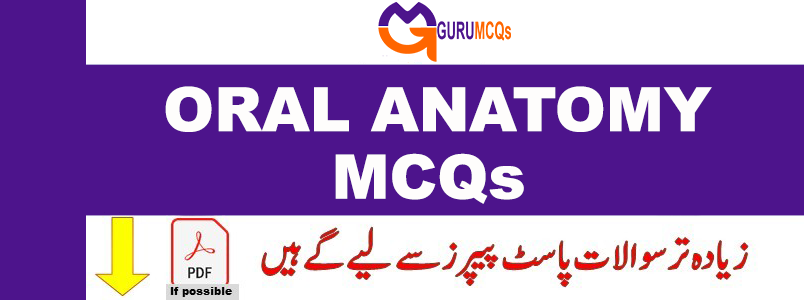
Gurumcqs.com offers a comprehensive collection of 2000+ basic and advanced oral anatomy MCQs, complete with answers and detailed explanations. This section is dedicated to covering all essential aspects of the oral anatomy subject, focusing on key topics related to the anatomy of the mouth and teeth. These include Basic Oral Anatomy, Calcification and Eruption of Teeth, Deciduous Dentition, Occlusion, Permanent Dentition, Physiologic Form of Tooth and Periodontium, Osseous Structures, TMJ, and more. The questions are carefully selected from reputable reference books on oral anatomy. These dental anatomy MCQs are valuable for interview preparation, entrance examinations, competitive exams, and certifications, catering to individuals with varying levels of experience, whether they are seasoned professionals, freshers, or students. Additionally, you can explore MCQs on medical topics on the platform.
191. Thinnest labial plate is found in the region of____________?
A. Upper central incisors
B. Lower central incisors
C. Upper canines
D. Lower canines
192. Position and movement of articular disc of TMJ is controlled by fibers of_____________?
A. Lower head of lateral pterygoid muscle
B. Sphenomandibular ligament
C. Superficial head of medial pterygoid muscle
D. Upper head of lateral pterygoid muscle
193. Which of the following muscles moves the condyle and articular disc anterior and downwards on glenoid fossa______________?
A. Lateral pterygoid
B. Medial pterygoid
C. Temporalies- anterior fibers
D. Temporalis – posterior fibers
194. Basically TMJ is a_____________?
A. Ball and socket joint
B. Hinge and axis joint
C. Synovial joint
D. Diartmodal joint
195. In maxillary 1st permanent molar, the 2 obtuse angles are________________?
A. Mesiolingual and mesiofacial
B. Mesiofacial and distolingual
C. Distofacial and mesiolingual
D. Distofacial and mesiofacial
196. In the mandibular arch, in which tooth maximum lingual inclination is present_______________?
A. 1st premolar
B. 3rd molar
C. Lateral incisors
D. Canine
197. Following eruption , the root of the maxillary central incisor completes development at what approximate age ?
A. 7 years
B. 8 years
C. 9 years
D. 10 years
198. The maxillary lateral incisor is smaller than the maxillary central incisor on all aspects EXCEPT which one of the following______________?
A. Crown length
B. Mesiodistal crown width
C. Faciolingual crown width
D. Root length
199. Which teeth the proximal aspect shows rhomboidal appearance________________?
A. Maxillary posteriors
B. Mandibular posteriors
C. Maxillary anteriors
D. Mandibular anteriors
200. Steepest cusp is seen in_______________?
A. Maxillary 1st premolar
B. Maxillary 1st molar
C. Mandibular 2nd molar
D. Mandibular 1st molar

Pingback: Oral Pathology MCQs with Answers for Exam Preparation - GURU MCQS